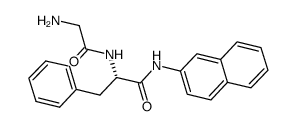Calcium mobilization by nicotinic acid adenine dinucleotide phosphate (NAADP) in rat astrocytes.
Karthika Singaravelu, Joachim W Deitmer
Index: Cell Calcium 39(2) , 143-53, (2006)
Full Text: HTML
Abstract
Nicotinic acid adenine dinucleotide phosphate (NAADP) has been shown to release intracellular Ca(2+) in several types of cells. We have used Ca(2+)-sensitive fluorescent dyes (Fura-2, Fluo-4) to measure intracellular Ca(2+) in astrocytes in culture and in situ. Bath-applied NAADP elicited a reversible and concentration-dependent Ca(2+) rise in up to 90% of astrocytes in culture (EC(50)=7 microM). The NAADP-evoked Ca(2+) rise was maintained in the absence of extracellular Ca(2+), but was suppressed after depleting the Ca(2+) stores of the ER with ATP (20 microM), with cyclopiazonic acid (10 microM) or with ionomycin (5 microM). P(2) receptor antagonist pyridoxalphosphate-6-azophenyl-2'4'-disulfonic acid (PPADS, 100 microM), IP(3) receptor blocker 2-aminoethoxydiphenyl borate (2-APB, 100 microM) and PLC inhibitor U73122 (10 microM) also reduced or suppressed the NAADP-evoked Ca(2+) rise. NAADP still evoked a Ca(2+) response after application of glycyl-l-phenylalanine-beta-naphthylamide (GPN, 200 microM), which permeabilizes lysosomes, or preincubation with H(+)-ATPase inhibitor bafilomycin A1 (4 microM) and of p-trifluoromethoxy carbonyl cyanide phenylhydrazone (FCCP, 2 microM), that impairs mitochondrial Ca(2+) handling. In acute brain slices, NAADP (10 microM) evoked Ca(2+) transients in cerebellar Bergmann glial cells and in hippocampal astrocytes. Our results suggest that NAADP recruits Ca(2+) from inositol 1,4,5-trisphosphate-sensitive Ca(2+) stores in mammalian astrocytes, at least partly by activating metabotropic P(2)Y receptors.
Related Compounds
| Structure | Name/CAS No. | Molecular Formula | Articles |
|---|---|---|---|
 |
H-Gly-Phe-βNA
CAS:21438-66-4 |
C21H21N3O2 |
|
Effect of glycyl-L-phenylalanine 2-naphthylamide on invertas...
1985-02-01 [Biochem. J. 225(3) , 645-8, (1985)] |
|
Constitutive lysosome exocytosis releases ATP and engages P2...
2012-10-01 [J. Cell Sci. 125(Pt 19) , 4567-75, (2012)] |
|
A confocal study on the visualization of chromaffin cell sec...
2010-12-01 [J. Struct. Biol. 172(3) , 261-9, (2010)] |
|
N-acetylneuraminic acid accumulation in a buoyant lysosomal ...
1986-09-14 [Biochem. Biophys. Res. Commun. 139(2) , 838-44, (1986)] |
|
Expression and purification of active recombinant cathepsin ...
2009-01-01 [J. Biomed. Biotechnol. 2009 , 746289, (2009)] |